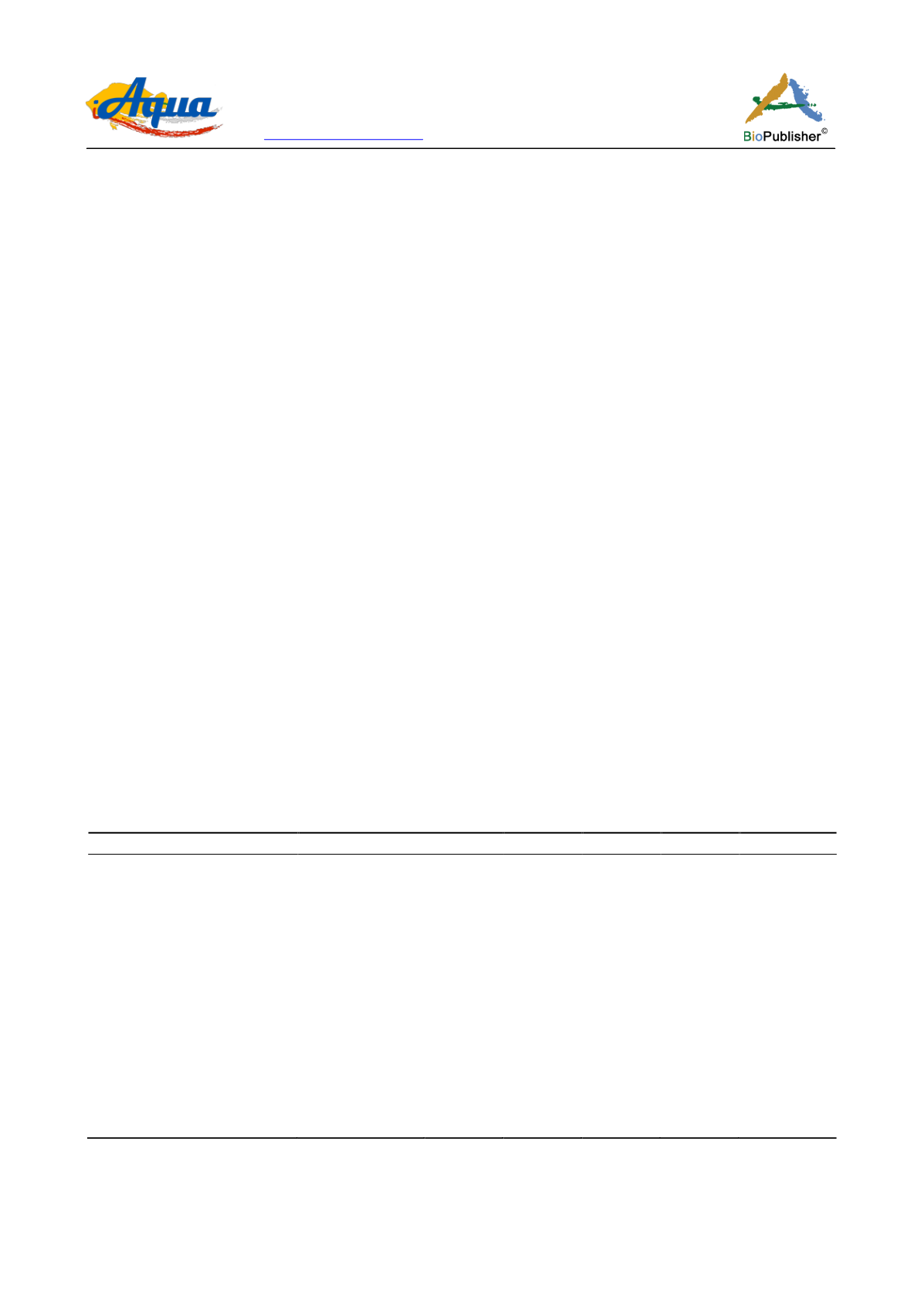
International Journal of Aquaculture, 2017, Vol.7, No.6, 42
-
50
43
Ocimum gratissimum
also called basil leaf is an aromatic, herbaceous and perennial plant. Its vernacular name
includes nchanwu, daidoya and effrin in Igbo, Hausa and Yoruba languages respectively in Nigeria (Epharim et
al., 2000). It’s popular among users due to its antimicrobial properties (Orafidiya et al., 2000). The objectives of
this study are to evaluate the effect of graded levels or dosages of
Ocimum gratissium
on growth performance,
nutrient utilization and production economics of juvenile catfish in sustainable aquaculture development in
Nigeria.
2 Materials and Methods
Study area
The study was conducted in the Department of Aquaculture and Fisheries Management Postgraduate’s Teaching
and Research Laboratory, University of Ibadan, Ibadan, Nigeria.
Collection, identification, preparation and processing of the plants materials
Identification of the plant material was done in the Department of Forestry and Renewable Resources, Faculty of
Agriculture and Forestry Resources, University of Ibadan, Ibadan Nigeria. The collection, preparation, processing
and preservation were done practically as reported by Igbakin and Oloyede (2008) and Ogbuewu et al. (2010).
Calculated dosages for basil leaf (
Ocimum gratissimum
)
There were several attempts to evaluate the pharmacological dosage of
O. gratissimum
in recent time as reported
by Ojo et al. (2013) and Adedosu et al. (2012) with the dosage ranging from 100 – 400 mg/kg body weight. Also a
higher dosage had been reported by Fandouhan et al. (2008) at 1500 mg/kg in Wistar rats. The dosage values of
basil leaf (
Ocimum gratissimum
) used in this study was based on the extrapolated values of 0.5 g/kg in rats
reported by (Ibironke and Ekpo, 1992). The final dosages ranged from 0.0125 – 2.0 g/100g body weight.
Formulation and preparation of experimental diets
The various ingredients used in compounding the diets were brought from Adom Feedmill and Veterinary Supply
Shop at Orogun, and Bodija Market, Ibadan, Oyo State Nigeria. The experimental diets were formulated using
algebraic method along with least cost formulae of Falayi (2003).The diets were prepared using the various
calculated dosages to produce
Ocimum gratissimum
meal diets and coded as follows: OGM1 (control), OGM2,
OGM3, OGM4, OGM5 and OGM6 diets respectively as shown in Table 1. The fish feed were prepared following
the methods of Adewole and Awosusi (2015).
Table 1 Percentage composition of ingredients (g/100g diets) in
Ocimum gratissimum
meal diets for feeding trials
Ingredients
OGM1 (Control)
OGM2
OGM3
OGM4
OGM5
OGM6
Fishmeal
28.55
28.55
28.55
28.55
28.55
28.55
Soybean meal
20.93
20.93
20.93
20.93
20.93
20.93
Groundnut cake
20.71
20.71
20.71
20.71
20.71
20.71
Yellow maize
20.76
20.635
20.51
20.26
19.76
18.76
Vegetable oil
2.50
2.50
2.50
2.50
2.50
2.50
Vitamin/mineral premix
1.50
1.50
1.50
1.50
1.50
1.50
Cassava starch (binder)
1.50
1.50
1.50
1.50
1.50
1.50
Common salt
0.50
0.50
0.50
0.50
0.50
0.50
Bone meal
1.00
1.00
1.00
1.00
1.00
1.00
Carboxyl/methylcellulose
2.00
2.00
2.00
2.00
2.00
2.00
Chromic oxide
0.05
0.05
0.05
0.05
0.05
0.05
Ocimum gratissimum
0.00
0.125
0.25
0.50
1.00
2.00
Total
100
100
100
100
100
100
Calculated crude protein
40.00
40.00
40.00
40.00
40.00
40.00
Note: OGM =
Ocimum gratissimum
Meal


